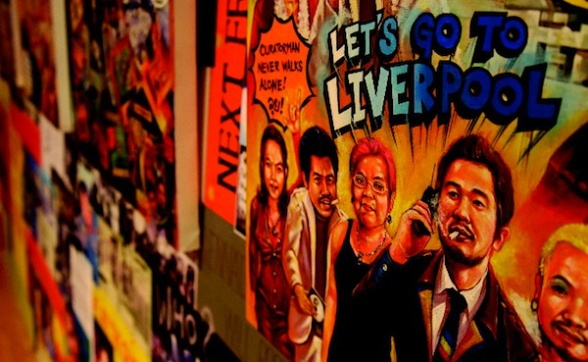Navin Rawanchaikul

Havin Rawanchaikul, SUPER(M)ART - How to be a Successful Curator - A Survival Game, 2004
Havin Rawanchaikul, SUPER(M)ART - How to be a Successful Curator - A Survival Game, 2004
Fact and fiction blur into one in Navin Rawanchaikul’s (b. 1971, Chaing Mai, Thailand) complex work. Working in collaboration with diverse groups of people (taxi-drivers in New York, gallery-goers in Paris, elderly villagers on the outskirts of Chiang Mai, Thailand, where he was born), Rawanchaikul puts audience participation at the centre of his work. Concerned with art as communication, he explores the exchange of ideological (mis)understandings, both intergenerational and cross-cultural. His work is infused with colourful humour, mixing traditions of high art, such as large-scale oil painting, with popular culture, such as manga and American comic-book cartoons. A story-teller, he weaves intricate narratives that centre on the adventures of semi-fictional characters and his own alter egos.
Rawanchaikul’s work for International 04 was based upon the concept of the SUPER(M)ART, an installation (displayed at the Palais de Tokyo, 2002) that included a vast painted comic strip charting the adventures of Old Navin, an ageing once-famous artist and a CEO from the fictional company ©uratorman, Inc. Playing with art as commodity and the commercialisation of the art world, this work invited the audience to ‘Participate in the Future of Art’ via a pin-board, part soap-box and part market research for ©uratorman, Inc. In Rawanchaikul’s Liverpool installation, ©uratorman, Inc launched How to be a Successful Curator: A Survival Game, an interactive board game which took players through a series of ‘real-life’ art-world situations. Players made decisions which determined whether or not they could ‘make it’ and become a freelance international curator. The game was competitive and a league table was displayed throughout the exhibition.
While satirising and critiquing the art world and its players, Rawanchaikul’s glossy ‘edutainment’ product, which was available for sale, nevertheless tapped into a fascination with the glamour of this elitist community. The environment he created was slick and professional. The issues he raised were particularly pertinent to Liverpool and the Liverpool Biennial.
Rawanchaikul built the fact that the city had recently been awarded the status of European Capital of Culture 2008 into the narrative of his work. What did it mean to be a Capital of Culture? How did art relate to culture? How, in a global economy, did art, culture and money interrelate?
For International 04, a short-list of artists was drawn up by independent curators. Rawanchaikul, an artist who enjoys significant international recognition, was not a surprising suggestion. His work is self-reflexive, a microcosm of the very world in which he, as a contemporary artist, is a player. Ironically, it sets up a mirror to the systems of patronage that support and secure his own success.
Navin Rawanchaikul at Liverpool Biennial 2004
SUPER(M)ART - How to be a Successful Curator - A Survival Game, 2004
Installation
Commissioned by Liverpool Biennial 2004
Exhibited at Tate Liverpool
Supported by
Visiting Arts
Liverpool Biennial
55 New Bird Street
Liverpool L1 0BW
- T +44 (0)151 709 7444
- info@biennial.com
Liverpool Biennial is funded by
Founding Supporter
James Moores